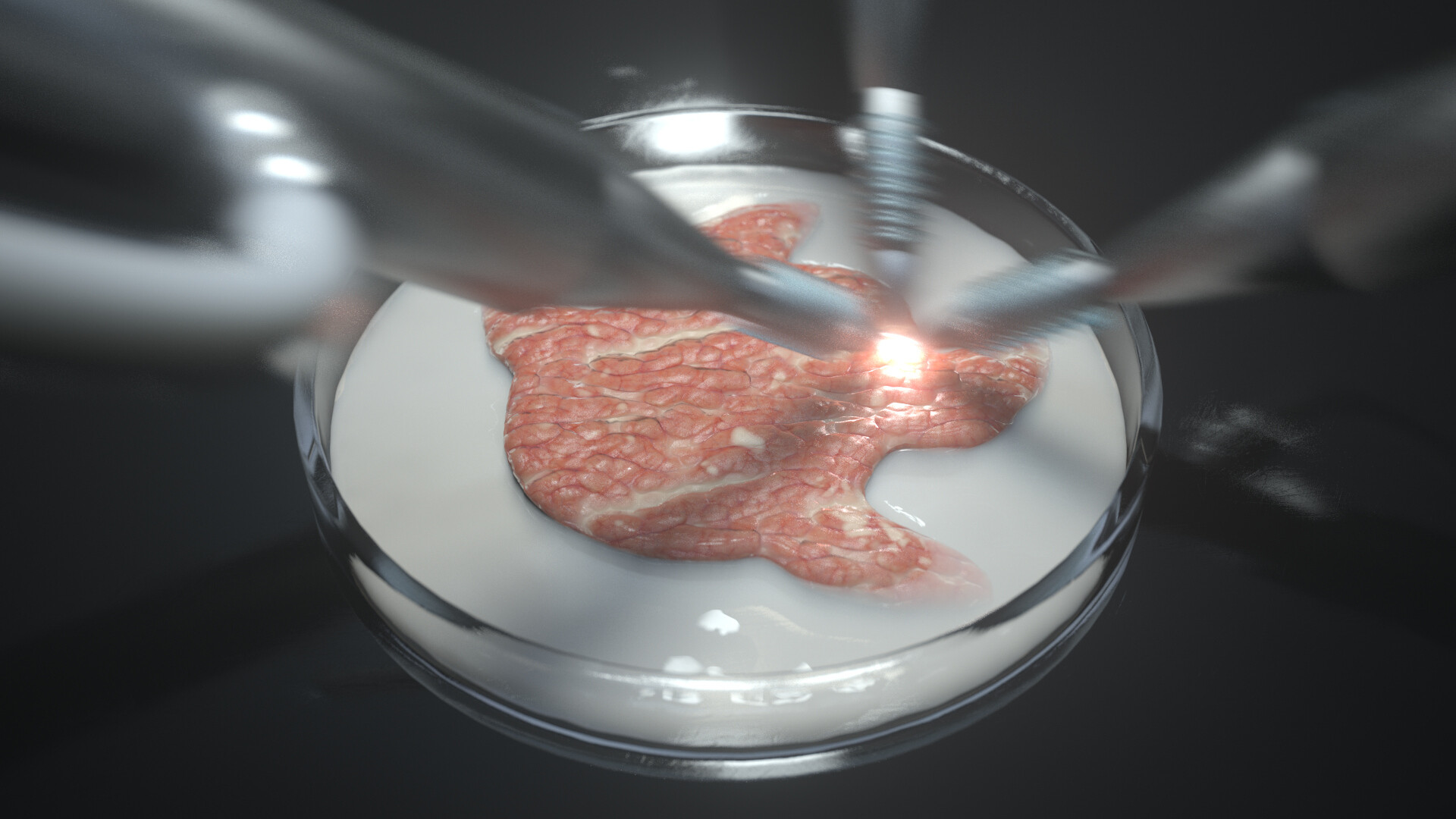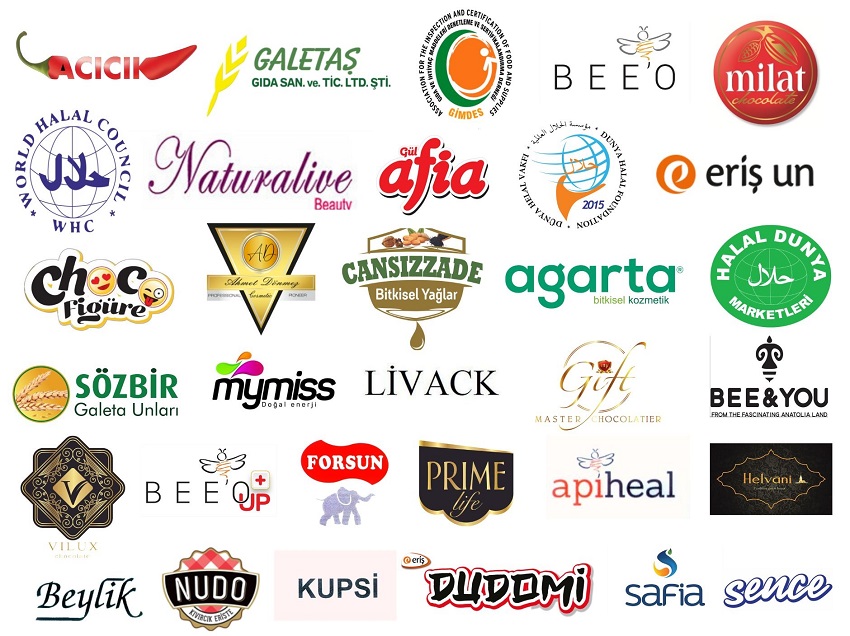Dr. Lecturer Yılmaz KAYA
WHAT IS ARTIFICIAL MEAT AND HOW IS IT PRODUCED?
Artificial meat is the name given to the product that is obtained as a result of growing and differentiation, in a bioreactor with controlled environments (heat, light, nutritional factors, etc.), of stem cells taken from some animals with economic value, which are then transformed first into muscle cells and then into larger muscle tissues. “Artificial meat!” production is generally achieved by cell and animal tissue culture methods. These methods generally require extremely expensive and advanced technological devices and chemicals. In short, the logic of “artificial meat!” production is as follows; First of all, it starts with taking parts from a suitable tissue (embryonic myoblast and/or skeletal muscle cell) of the animal desired to be produced for artificial meat (such as goat, cattle, chicken, and pig). Afterward, this piece is left in the nutrient medium within the bioreactor under controlled conditions (heat, light, cleaning, etc.).
In the nutrient medium, the required hormones, artificial nutrients, and/or plant-based nutrients are given to the fattening medium in accordance with the procedure and the artificial meat begins to grow. In other words, the piece taken from the initial stage from the animal tissue unites like a stem cell to form myotubes, and myotubes differentiate to form myofibers. These structures graded as myofibers can be processed and consumed as meat products. “Artificial meat!” is generally obtained colorless. Various chemicals can be added to obtain the color and aroma of the artificial meat.
OPINIONS AND CLAIMS OF THOSE WHO BRING ARTIFICIAL MEAT TO THE AGENDA
“Modern livestock techniques and the meat industry have a number of harmful side effects. These side effects include the high greenhouse gas emissions in modern livestock, the decrease in green areas, the presence of harmful substances such as pesticide residues and heavy metals in the meat of animals fed with modern agriculture. One of the biggest reasons for the increase of pathogens can be counted as the chemicals used in modern livestock and agriculture. According to the information currently presented to the public, it is assumed that it will not cause any pathogen-borne disease in the artificial meat sector. Because the “artificial meat!” can only be produced in clean and non-living laboratory environments.”
A CRITICAL OVERVIEW OF ARTIFICIAL MEAT
It is a possibility that the artificial meat sector would never be commercialized if it never becomes advantageous in terms of food safety and price in the future. The biggest obstacles to the mass production of artificial meat can be counted as the high costs associated with its production, the inability to produce large quantities in a short time, the reactions of the consumers, and the religious sensitivities of, especially, the Muslims, Jews, and Hindus.
The traditional meat industry is faced with different factors such as changing consumer demands and market trends, human population, greenhouse gas emissions, degradation of forest areas, increased use of agricultural land and grain products for non-agricultural purposes, and animal welfare concerns. Of course, one of the biggest of these factors is the desire to earn more money. However, although it has positive aspects according to the existing information, there are some other factors that might prevent the artificial meat sector from long-living, such as the production cost of “artificial meat”, its suitability for industrial production, the tolerance level of people, not being accepted as natural, and some other ethical concerns.
However, it should not be forgotten that; as with genetically modified plants, the use of modern biotechnological methods in trade is advocated by stating that it will solve the problems of global hunger and food deficiency. While 1.7 million hectares of GMO crops were produced on a global scale in 1996, this figure reached 191.7 million hectares in 2019. Despite this, neither “hunger” has been resolved, especially in the cultivated areas; nor have the farmers, who cultivate GMO crops, reached economic welfare. While these problems are remaining, when we look at the data of the last quarter, biotech companies producing GMO seeds have enriched. A critical approach to the “artificial meat” issue cannot be ignored, while these examples are there today.
However, since no large amount of artificial meat has been produced so far, it is not known whether any pathogen will occur when it is produced in large quantities. In addition to these, it is not known how reliable the synthetic products (hormones, plant-based foods, amino acids, etc.) used during artificial meat production in terms of food safety and health. There is a potential that this type of new generation nutrients’ production and consumption could be dangerous.
In addition, the reasons, such as increasing the product yield, giving aroma, and having significant economic benefits, for the use of substances that are proven to be harmful to health during the production of artificial meat cannot make the artificial meant innocent or make it permissible in terms of religion. Allah (SWT) orders us to consume Tayyib, clean and healthy foods while avoiding the harmful ones. It should not be forgotten that Allah (SWT), who is Razzaq, is the guarantor of the Rizq of every creature since He is the creator of them.
It is clear that as in the case of some biotechnological products, it is not appropriate in terms of Islam to consume products that have certain chemicals harmful to human and living health. In the last words; the status of “artificial meat” should be evaluated transdisciplinary (Agricultural Biotechnologist, Agricultural Engineer, Veterinarian, Biologist, Doctor, Islamic scholars (Fuqaha), etc.). These evaluations will be of great importance in terms of guiding consumers.





